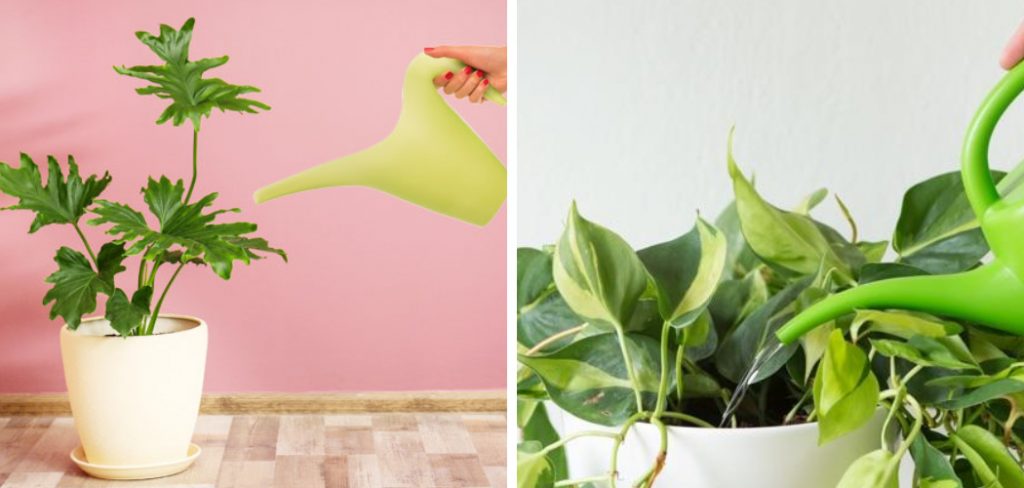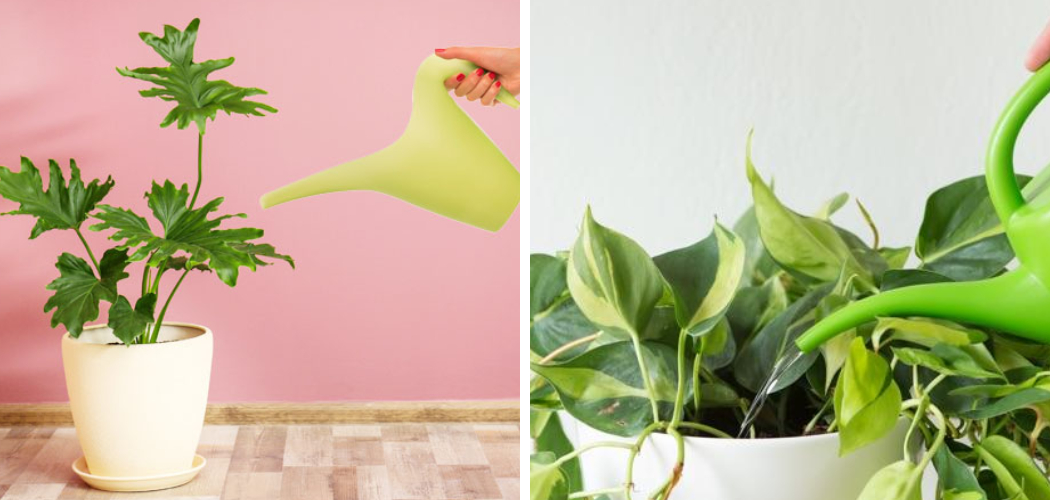To water a Philodendron, make sure to thoroughly moisten the soil until water drains out from the bottom of the pot. Proper watering is essential for the health and growth of this plant.
Philodendrons typically prefer moderately moist soil, so you should water them when the top inch of the soil feels dry. Overwatering can lead to root rot, while underwatering can cause dehydration. By following these guidelines, you can keep your Philodendron healthy and thriving.

How to Water a Philodendron: Step by Step Guide
Understanding Philodendrons
Philodendrons are popular houseplants known for their attractive foliage. Understanding the needs of these plants is crucial. Philodendrons come in various types, each with its unique characteristics. An overview of the different types helps in identifying and caring for them appropriately.
Proper watering is vital for the health of philodendrons, ensuring they thrive. Overwatering can lead to root rot, while underwatering can cause the leaves to wilt and dry up. It is crucial to strike a balance between the two. When watering a philodendron, allow the soil to dry partially between waterings.
This prevents waterlogging and promotes healthy growth. Remember that each philodendron species may have slightly different watering requirements, so it’s important to research or consult a plant care guide specific to your variety. By understanding the needs of philodendrons and providing them with the right amount of water, you can enjoy their beauty and longevity as indoor plants.
The Watering Needs Of Philodendrons
The watering needs of Philodendrons are influenced by several factors. These include the plant’s size, the type of soil it’s planted in, and the environmental conditions. To determine the right amount of water, it’s important to consider these factors and adjust accordingly.
Signs of underwatering can include wilting leaves, dry soil, and a lack of growth. On the other hand, overwatering can lead to yellowing leaves, root rot, and fungal problems. It’s crucial to strike the right balance and provide adequate moisture without overdoing it.
By observing the plant’s behavior and checking the moisture levels of the soil, you can effectively meet the watering requirements of your Philodendron.
Tips For Watering Philodendrons
Watering philodendrons properly is essential for their growth and health. When watering, it’s important to choose the right method. One option is to water the plant from the top, allowing the water to soak through the soil. Another method is bottom watering, where the pot is placed in a tray of water and absorbs the moisture from below.
The best time to water philodendrons is when the top inch of soil feels dry to the touch. It’s also crucial to manage humidity levels, as philodendrons thrive in high humidity environments. By misting the leaves or placing the plant near a humidifier, you can provide the ideal conditions for optimal growth.
Remember to avoid overwatering, as it can lead to root rot. By following these tips, you can ensure your philodendrons stay healthy and vibrant.
Frequently Asked Questions Of How To Water A Philodendron
What Is The Best Way To Water A Philodendron?
Water your philodendron thoroughly when the top inch of soil feels dry, allowing excess water to drain.
How Much Should You Water A Philodendron?
Watering a philodendron depends on factors like light, temperature, and soil. Generally, water when the top inch of soil is dry.
Do You Water Philodendrons From The Top Or Bottom?
Water philodendrons from the top to ensure that the soil is evenly moistened.
How Do I Know If My Philodendron Needs Water?
Check if the soil is dry by touching it with your finger. If it feels dry, your philodendron needs water.
Conclusion
Proper watering is essential for the health and well-being of your philodendron plant. By understanding the unique watering needs of your philodendron and following a few simple guidelines, you can ensure that your plant thrives and continues to beautify your living space.
Avoid overwatering by allowing the top inch of soil to dry out before watering again. This will prevent root rot and other issues caused by waterlogged soil. Additionally, remember to use room temperature water and avoid using water that has been treated with chemicals such as chlorine, as these can harm your plant.
Finally, pay attention to any signs of dehydration or overhydration in your philodendron, such as yellowing leaves or wilting. Adjust your watering routine accordingly to keep your plant happy and healthy. With these tips, you can confidently care for your philodendron and enjoy its lush beauty for years to come.

